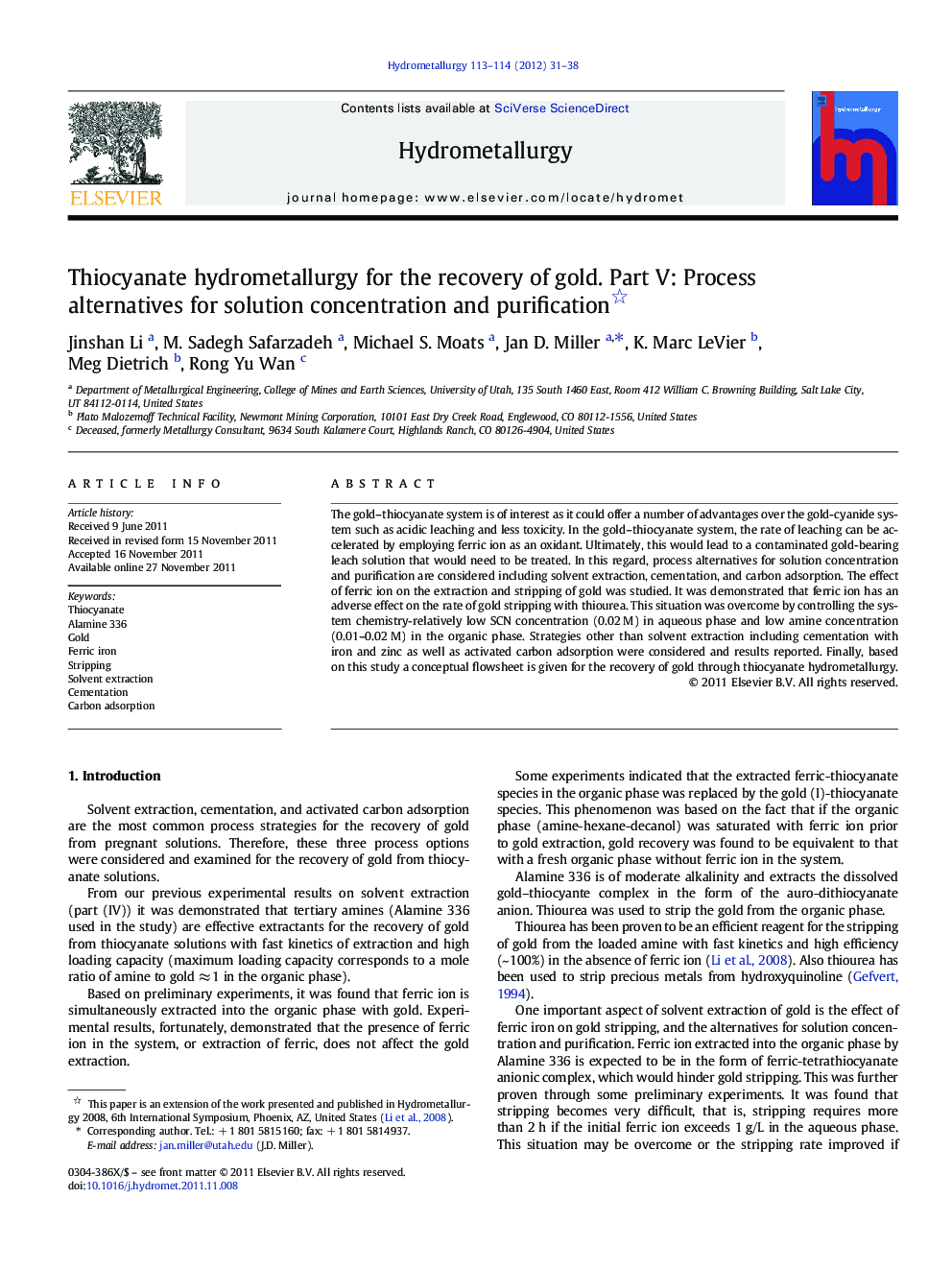| Article ID | Journal | Published Year | Pages | File Type |
|---|---|---|---|---|
| 212571 | Hydrometallurgy | 2012 | 8 Pages |
The gold–thiocyanate system is of interest as it could offer a number of advantages over the gold-cyanide system such as acidic leaching and less toxicity. In the gold–thiocyanate system, the rate of leaching can be accelerated by employing ferric ion as an oxidant. Ultimately, this would lead to a contaminated gold-bearing leach solution that would need to be treated. In this regard, process alternatives for solution concentration and purification are considered including solvent extraction, cementation, and carbon adsorption. The effect of ferric ion on the extraction and stripping of gold was studied. It was demonstrated that ferric ion has an adverse effect on the rate of gold stripping with thiourea. This situation was overcome by controlling the system chemistry-relatively low SCN concentration (0.02 M) in aqueous phase and low amine concentration (0.01–0.02 M) in the organic phase. Strategies other than solvent extraction including cementation with iron and zinc as well as activated carbon adsorption were considered and results reported. Finally, based on this study a conceptual flowsheet is given for the recovery of gold through thiocyanate hydrometallurgy.
Graphical abstractFigure optionsDownload full-size imageDownload as PowerPoint slideHighlights► Ferric iron was extracted in significant quantities at a SCN/Fe molar ratio of above 3. ► Ferric ion has an adverse effect on the rate of gold stripping with thiourea. ► Gold cementation with iron powder from thiocyanate solution was effective (~ 98% gold recovery). ► Cementation of gold with zinc powder followed a slower kinetics, despite more favorable thermodynamics than iron. ► Activated carbon adsorption of gold showed rapid kinetics and high gold recovery (≥ 98%) but suffered from the high consumption of thiocyanate.
